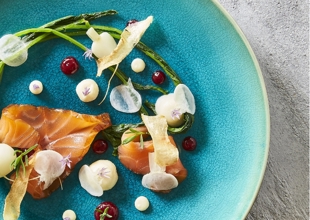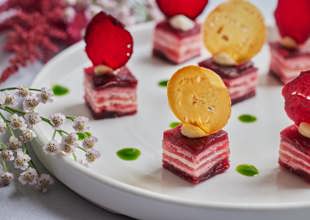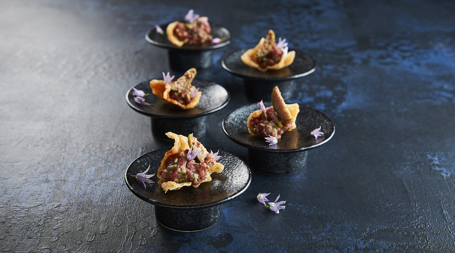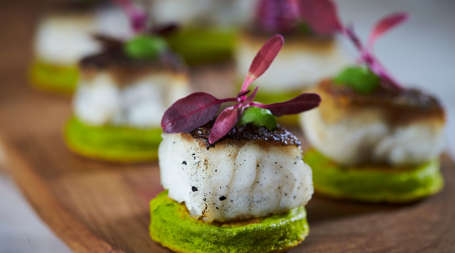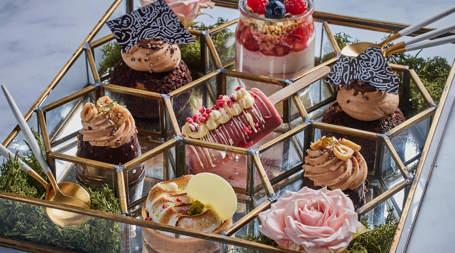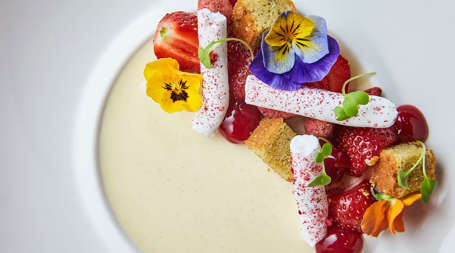Taste
Whilst many of you may think taste is the most important sense when it comes to food, taste actually only comes about due to the accumulation of multiple senses.
Yes, it’s true that it sits at the core of this blog post, because it’s the sense that other senses influence and can be influenced by, but without anyone being able to conduct an experiment where all other senses are removed from taste (which, to this day, is impossible), there is huge debate about what our tongues can actually sense.
We all know about the old myth of the ‘tongue map’ but it really is the other four senses that put in the work here.
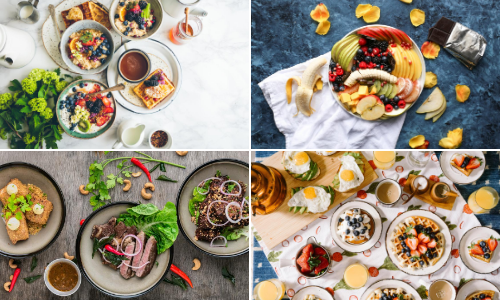
Sight
Most of the time, you can set expectations of what your meal or beverage will taste like with how it’s presented. For example, a grey-looking, fatty steak with no meat juices at all will most likely be chewy and overcooked.
Similarly, everyone has had one meal that stands out as one of the worst dining-out experiences they’ve ever had due to the quality/presentation or taste of the food. The relationship between our expectations and actually liking what we are given can certainly be influenced by our past based on what we see before us. Expectations can be set by our past experiences.
Furthermore, we have learnt the importance of colour in this debate - a study that investigated the impact of colour on refreshment level in different beverages found that almost always clear liquids were rated the most refreshing (Zellner and Durlach 2003). This could perhaps be due to the fact we have known, and we continue to know how refreshing water is and given it’s ‘water colour’ we now associate this within beverages. Think about this when you drink your next beverage - light beer over dark, white wine over red, mojito over martini…
We’ve all been biologically conditioned to know what something will taste like by its colour - generally, brown is associated with rotten fruit and vegetables, red has sweeter properties (think summer berries) and yellow and orange will err on the sour side (its association with citrus fruits is strong here).
There are so many questions around the subject of sensory research that must be answered before we know the true correlation between sight and taste, but it’s one to think about when putting together each ingredient for your next meal. Address each individual food and consider why you chose it - what makes it look edible?
Sound
Picture a freshly baked French baguette - what’s the first thing you think about? For many, it will be the sound of the crust. We can’t forget the importance of sounds when it comes to food and its influence with flavours.
Similar to sight, we recognise sounds with food biologically, which is essential when judging its freshness and avoiding spoiled foods. The sounds that food and beverages can make when inside our mouths is important too and relates to this.
For example, which would you prefer - an apple with a crunch or a soft bite? A crisp that snaps or bends? Milk that is smooth or curdled? The fact that foods can act as a safety net; when it makes the sounds it ‘should’, then you’re wanting to take a bite or sip.
Touch
Whilst all senses influence each other here, there is a strong relationship between sound and touch. Food (and beverages, but good luck with that if wanting to avoid mess) textures can be felt with your fingers, tongue, teeth and palate. Textures comes slowly to babies due to only being exposed to soft foods. Just imagine if all food was one texture…
Food texture refers to qualities felt with our tongues, teeth and fingertips. It’s the component that identifies that jelly really is slimy and cookies really are chewy.
As food is chewed, it is being constantly evaluated. The teeth, tongue and jaw apply a force to the mouthful, depending on how easily it can be broken down, thus the deciding whether it is chewy, brittle, runny or fizzy to name a few.
Consumers are putting increased pressure on food demands; rather than a basic need for survival, it’s becoming an entire experience from start to finish. Whilst presentation is constantly being experimented on, it’s the textures of foods that remain a challenge for the food industry - innovative textures are seen as a key area when considering new food developments.
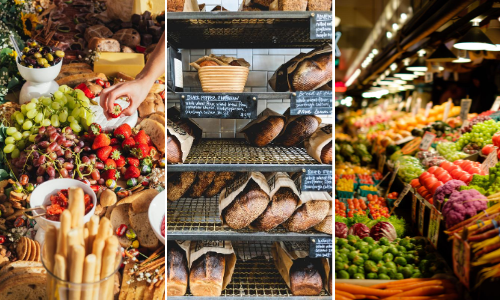
Smell
Whilst smell is the last sense mentioned of the five, it should not be discounted. Have you ever had a blocked nose and can’t taste the food you’re eating? Point proven…smell is essential when trying to gain the entire sensory experience.
Our sense of smell not only identifies the odour of food, but also the flavour. Scientists actually believe humans can use their smell to discover the nutrients within food; a fruity smell hints at vitamin C and boasts sugar and energy, while meaty odours suggest iron. Moreover, different cultures experience tastes based on their regional cuisine, thus associations change depending on where you travel to. The taste-smell overlap shines once again, and is present when discovering tastes that are sour, fatty, bitter and sweet also.
It’s evident that the entire sensory experience that comes with food and beverages is more complex than we realise. But, one thing that’s for sure, is that each sense has a strong relationship with the other and is essential when wanting to embark on the entire journey that your senses take you on for each food you eat and drink you sip on. Next time you sit down for a meal, take a moment to think about each of your senses - what do you think about the colours, appearance, smell, taste, or texture? Be mindful - appreciate and savour your food with every sense…
Food that inspires all five senses
For food that takes all five of your senses on a wonderful journey, choose Payne & Gunter, London’s original caterers. We’re proud to bring unique, British-inspired culinary concepts to life for business functions of all sizes, with bespoke menus to meet every event objective.
To discover how we could elevate your 2025 event, contact us on 0845 128 7395 or email info@payneandgunter.co.uk.
Read More
-

Payne & Gunter partners with Garsington Opera to elevate culinary experience
Payne & Gunter announces its partnership with Garsington Opera, bringing bold flavours and farm-to-fork dining with Michelin Green Star chef Will Devlin to the iconic festival.
-
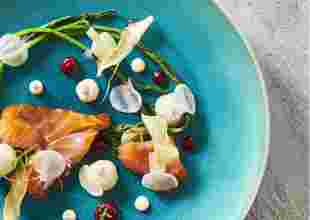
2024 at Payne & Gunter: A year of innovation in event catering
We look back at a remarkable 2024 and look forward to another year of exceptional catering for conferences and big events in London.
-

The Best of British Summertime
Learn more about the bespoke British menus served at three of this summer's most prestigious events, showcasing why Payne & Gunter are the outdoor event caterers of choice.
-
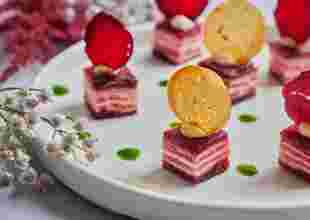
Payne & Gunter perks and Promotions
Payne & Gunter will be running promotions from 2025 through to 2026. Peruse our promotions.
Get in touch
Whether you fancy canapes or a banqueting, our team love to talk ideas. Get in touch today.


